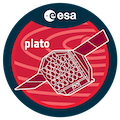Speaker
Description
In the past decade, correlations between stellar elemental abundances of planet hosting stars and their orbiting bodies have been extensively explored in multiple studies (e.g. Adibekyan+, 2012a; Santos+, 2017a & b; Teske+, 2019; Tautvaišienė+, 2022). There is a broad consensus on the prevalence of giant-planets around metal-rich stars (e.g. Fischer and Valenti, 2005; Adibekyan+, 2012a; Tautvaišienė+, 2022) as well as documented overabundances of α-elements in planet hosts (Adibekyan+, 2012b; Tautvaišienė+, 2022). But so far, no definitive evidence of relationships between stellar abundance patterns or anomalies and planet-hosting stars has been found (Liu+, 2020; Tautvaišienė+, 2022; Behmard +, 2023). However, there are indications that planet system architectures could leave their imprints in the depletion of refractory elements (e.g. Yun+, 2024). In addition, observations of protoplanetary disks show a wide variety of morphologies (Andrews+, 2018, Garufi+, 2024), which may influence chemistry, occurrences, and architectures, further complicating the picture of planetary formation. PLATO will discover thousands of planets around stars between 8 and 13 visual magnitudes (Matuszewski+, 2023). When it comes to chemical abundance measurements, bright stars (< 11 V mag) are currently underrepresented in large scale high-resolution spectral surveys. These are often neglected in favour of fainter objects which allow for longer integration times and a higher number of targets. Using short exposures (approx. 30s) WEAVE is capable to observe bright stars between 6 and 11 V mag during twilight-hours, without reaching full-well capacity. Therefore, a novel observing mode has been developed, allowing for efficient observations of multiple fields in short succession. As a pilot study for this new mode, WEAVE-twilight will focus on stars from PLATO’s Long-duration Observation Phase (LOP) fields (Nascimbeni et al., 2021 & in prep. 2024), hereby maximising its output regarding new and known exoplanet host stars. Initial tests will be conducted in April 2024, with first data expected in early to mid 2025. Focusing on F, G and K stars between 6 < V < 11 mag, it will contribute approximately 3000 high-resolution spectra for stars in this brightness range, resulting in a unique homogeneous abundance catalogue for up to 16 elements (C, O, Al, Ca, Mg, Mn, Na, Sc, Si, Ti, V, Y, Co, Cr, Fe and Ni). Combining these with Gaia proper motions and PLATO follow-up RV measurements will allow for the precise chemodynamical characterisation of thousands of bright stars and hundreds of potential new exoplanet hosts in the northern PLATO LOP field. This talk aims to provide an overview of the project, discussing the novel observing mode for WEAVE, its benefits to the observing community, the science yield of the proposed twilight survey, and possible future prospects.

